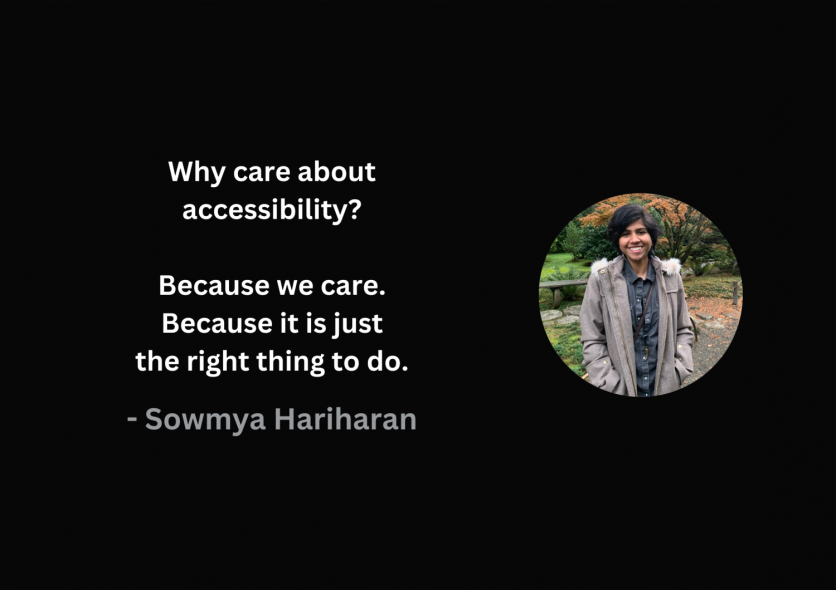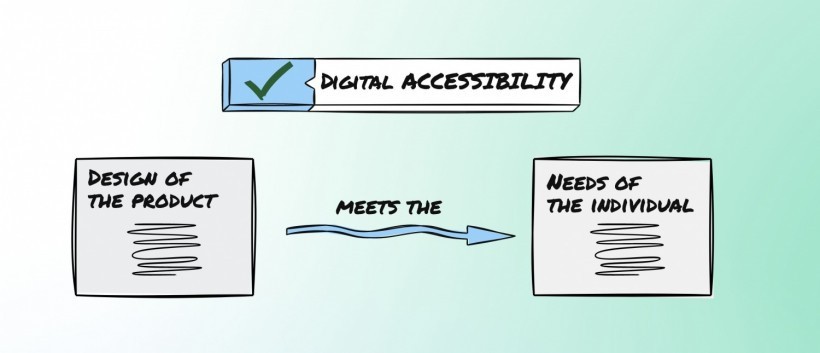
In the expansive realm of inclusive design, disabilities are classified as permanent, temporary, or situational. To unravel the intricacies of these challenges, let's take a look at the diverse accessibility needs across a spectrum of users.
Understanding Different Accessibility Needs
Permanent Disabilities
A permanent disability, a persistent challenge, shapes the daily experiences of users.
Temporary Disabilities
In contrast, temporary disabilities, lasting from hours to days, might arise from situations such as recovering from a sprained ankle.
Situational Disabilities
Situational disabilities, enduring from minutes to hours, manifest in specific contexts, like using eye drops after an eye doctor appointment.
Diverse User Scenarios
Let's delve into scenarios that paint a vivid picture of users grappling with various challenges.
Scenario 1: Navigating Stressful Environments with Cognitive and Mobility Challenges
Firstly, envision a user who had a recent appointment at the DMV. During the appointment, she needed to access crucial information from her phone while juggling a stack of documents. The environment was inherently stressful, given the nature of a DMV visit, resulting in cognitive challenges. Additionally, she needed to navigate the situation with limited mobility, as one of her hands was occupied with holding documents. In this case, the user experienced temporary cognitive and mobility disabilities.
Scenario 2: Overcoming Auditory Challenges in Noisy Environments
Now, picture a different scene where our user is at a noisy restaurant with friends, attempting to use his phone without earphones. Relying solely on auditory signals for important app-related decisions would be impractical in this context.
Scenario 3: Addressing Situational Speech Impairment in Foreign Countries
Transitioning to another setting, our user is touring a foreign country with minimal proficiency in the local language, presenting a situational speech impairment.
Scenario 4: Adapting to Visual Impairment in Outdoor Settings
Lastly, imagine the same user outdoors in that foreign country, attempting to use their phone under the glaring sun, resulting in almost visual impairment.
So, you can quickly see how these contexts start stacking up on top of each other. If you imagine the same user in a different context, you'll realize how important and crucial it is to meet all of these accessibility needs.
When we commit to making our products accessible, we mean that we will support users of all abilities in various contexts. It's essential to recognize the potential overlap between technologies our users might depend on. For instance, a user may experience both hearing and vision challenges simultaneously, and these might be permanent restrictions.
Our users might rely on Braille instead of voiceover or a screen reader, necessitating our preparedness to support different scenarios and use cases.
So, how do we support our users? To understand how, we need to comprehend how they participate in their community, what they aim to achieve, and how our products can assist them on their journey.
Remember, disabilities can be permanent, temporary, or situational. What might be convenient for some in temporary or situational scenarios is actually freedom for permanently disabled users—a perspective we deeply care about.
For those in the Payments industry, it's crucial to make apps accessible to all users, taking the privacy of accessibility users into account. If a user is dependent on external help for every screen in a payment flow, that app has failed its accessible users. Payment apps often require users to undergo identity verification flows involving the submission of personally identifiable information. It is crucial for these flows to be designed with both privacy and security in mind, ensuring that anyone relying on assistive technologies has a first-class experience, just like anyone else using the same app.
Technology as the Great Equalizer
Redefining Digital Disability
"Digital disability is a mismatch between the needs of the individual and the design of the product."

This profound statement encapsulates the essence of our commitment to inclusive design. Technology, a powerful equalizer, empowers us to transcend traditional barriers. The link between individual needs and product design defines digital disability, urging us to bridge this gap.
By embracing technology as a tool for inclusivity, we not only redefine digital disability but also reshape the narrative of user experience.
Our journey in crafting accessible payment apps becomes a testament to the transformative impact of technology, turning digital spaces into inclusive environments that cater to the diverse needs of every user.
Example Scenarios in Payments
Next, let's explore a standard Payments app and consider some example scenarios within it.
Scenario One: Navigating Crucial Transactions Independently
Imagine a user with disabilities attempting to link their existing bank account. They need to fill out address forms, complete SSN fields, and perform these tasks independently without relying on external assistance. The chosen app must prioritize the user's security, privacy, and other relevant considerations for regular use.
Scenario Two: Smooth Gift Purchases for Special Occasions
In this scenario, the user is involved in transferring money, adding funds to their wallet, or making purchases, particularly to buy a gift for a loved one during the holiday season. The user needs to take the lead and plan the entire process independently to maintain the surprise element. The ability to complete these tasks smoothly and quickly is crucial.
Scenario Three: Business Management with Accessibility in Mind
Consider a business owner trying to purchase ad credits to engage with their community and run their business successfully. The ability to manage crucial business tasks is paramount. If an app doesn't meet these needs, the user will explore alternatives that consider their requirements.
These scenarios highlight the importance of providing freedom for users with accessibility needs and the direct impact it has on users with special requirements.
Why Care about Accessibility?
Because We Care
So why should we care about improving the accessibility of products beyond what we just saw?
By now, we all understand that the fundamental answer to that question is we care because we care.
Because we want our products to be accessible to everyone in all contexts, irrespective of whether their disability is permanent, temporary, or situational.
And because it is just the right thing to do.
Knowing that we are doing the right thing because it is the right thing to do in and of itself is amazing. But, as with everything else in life, when you do the right thing, you also unlock new features. In this case, that would be the untapped market potential.
Untapped Market Potential
In the UK, the combined spending power of disabled individuals and their families is known as the purple pound. This represents a significant spending block for businesses. Studies emphasize that companies neglecting digital accessibility miss out on opportunities as they compel disabled individuals and their communities to seek alternative services.
In the UK, the purple pound is estimated to be worth more than £200 billion. In the US, the U.S. National Organization on Disability estimates that the discretionary spending power of people with special needs exceeds $200 billion. Recognizing and catering to this substantial market can have a profound impact on businesses, making accessibility not just a moral imperative but also a strategic business decision.
Fostering Innovation
Moreover, this commitment mitigates legal risks, ensuring compliance with protective laws that safeguard the rights of disabled users. Simultaneously, it fortifies our brand presence, dismantling barriers that may impede our engagement in significant contracts with banks and governmental bodies on a global scale—particularly if we have a prominent standing in the payments industry.
Choosing our app becomes a seamless process for disabled users, simplifying the decision-making for their friends and family as well. In scenarios where disabled users consider alternative apps due to accessibility concerns, their entire network tends to follow suit. Consistency in app usage within social circles remains a pivotal factor, emphasizing the importance of creating an accessible and user-friendly experience for all.
Furthermore, the integration of accessibility not only eliminates architectural, digital, and social barriers but also facilitates innovation within our products.
Repeatedly, we have observed the multifaceted benefits derived from making our products accessible to users with special needs. This inclusive approach extends advantages to a broader audience.
Illustratively, technologies such as screen readers, voice control devices, Google Assistant, and thoughtfully designed physical features like curbside cutouts exemplify the positive outcomes of our commitment to accessibility. By adopting a perspective that seeks universal accessibility, irrespective of users' literacy skills, situational constraints, or disability status, we naturally arrive at a streamlined user interface that inherently appealing to a diverse audience.
Accessibility For All Is a Win for All
In the pursuit of crafting payment apps that cater to diverse accessibility needs, we embark on a journey that extends far beyond compliance or market potential. It is a journey towards a digital landscape where every user, irrespective of their abilities, enjoys an equal and enriching experience.
Accessibility is not merely a checkbox on a list of features but a commitment to digital equity. By championing the cause of inclusivity, payment apps not only elevate user experiences for those with disabilities but create a more intuitive and user-friendly interface for everyone.
In the end, our collective effort to prioritize accessibility for all is a testament to the belief that technological progress is most impactful when it becomes a force for positive change, enhancing the lives of users and reshaping the future of digital interaction.
ⓒ 2025 TECHTIMES.com All rights reserved. Do not reproduce without permission.




